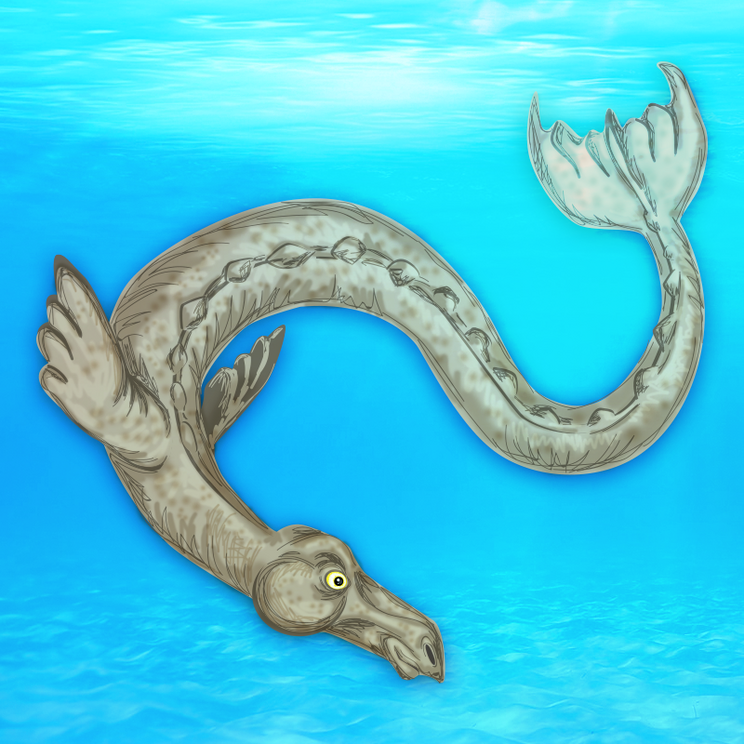Cadborosaurus
The Cadborosaurus willsi, or Caddy, is a sea serpent said to swim the waters of the northern Pacific; taking its name from Cadboro Bay in Greater Victoria, British Columbia. Caddy is most often described as a long, horse-faced serpent with humps or ridges running down its back; it is brown in color, and moves with undulating motions.
According to the indigenous people of northwest North America, Caddy migrates to the coastal Pacific ocean during the warm summer months, and images of the seafaring serpent could once be found on Inuit canoes to ward off the creature during this time.
Sightings of Caddy may date back hundreds of years, but modern sightings first gained heavy media attention in the early 1930s. Major H.W. Langley, clerk of the British Columbia Legislature, and F.W. Kemp, an official with the British Columbia Archives, were the first to come forward in the modern era; Langley in late 1933 and Kemp just after. Major Langley was said to have been out sailing with his wife near Discovery Island when they spotted a strange greenish-brown creature travelling in front of their boat. The story of their sighting was published four days later in the Victoria Daily Times, which inspired Kemp to come forward with his own tale from the previous year. He had been reluctant to speak of it for fear of ridicule, but the Langley family's account encouraged the Archives employee to share his story.
Kemp was relaxing on Chatham Island beach in British Columbia with his wife and son when they spotted an 80-foot, maned animal swimming off shore; despite popular scientific opinions of the time, he was certain that he and his family hadn't seen any mundane animal, such as a conger eel.
"The creature we saw off Chatham Island, three miles from Victoria was no more a conger eel than my hat. In spite of what our scientific gentlemen of British Columbia and Washington may say," Kemp said.
"I have caught a good many off the south coast of the Isle of Wight. My first feelings on viewing the creature were of being transformed to a prehistoric period when all sorts of hideous creatures abounded," he explained. "When the thing shoved its head on the rock it did so with a drifting movement that was not fish-like, but rather more like the movement of a huge lizard."
Since then, Caddy has been seen by dozens of experienced seaman and laypeople alike, but no strong physical evidence has yet surfaced; while some have claimed to find cadavers belonging to Cadborosaurus willsi, so far they have all proven to belong to mundane oceanic animals--mostly whales and sharks. Some skeptics believe that Caddy can be explained entirely by the behavior of ordinary animals. Sea lions, for instance, will often swim in herds; to the naked eye they can appear to form a continuous body as they bob out of the sea. Giant oarfish, too, are a popular culprit for Caddy sightings. They can reach over 30 feet in length and weigh in excess of 600 pounds. These long, silvery creatures undulate similarly to a serpent as they swim through the water, and could conceivably be mistaken for a monster. As is usual in cryptid sightings, none of the banal solutions to the mystery match the creature reports completely, and attempts to discredit witness testimony as such are often met with vehement denials from those who have seen the strange sea serpent.
Despite all such attempts to explain away the sightings, Caddy continues to be seen into the present; so if you find yourself on a beach in British Columbia, or out fishing anywhere in the northwest Pacific ocean, keep your eyes peeled for a long, serpentine creature with the head of a horse--it just might be a Cadborosaurus.

